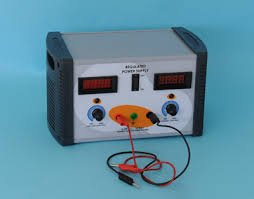
In the world of electronics, power supplies play a crucial role. Two common types of power supplies are regulated and unregulated. If you’ve ever wondered what sets these two options apart and which one is most suitable for your devices, you’ve come to the right place. In this article, we’ll delve deep into the differences between regulated and unregulated power supplies, providing you with valuable insights to make informed decisions.
Differences Between Regulated and Unregulated Power Supplies
Understanding the fundamental differences between regulated and unregulated power supplies is essential to grasp how they function and when each type should be used. Here are the key distinctions:
Voltage Control
Regulated Power Supply: Regulated power supplies maintain a constant voltage output regardless of fluctuations in input power or load. This means they provide a stable and precise output, crucial for sensitive devices.
Unregulated Power Supply: In contrast, unregulated power supplies do not maintain a constant voltage. The voltage output can vary depending on input conditions and load. This makes them less accurate and suitable for applications that don’t require stability.
Common Applications
Regulated Power Supply: Regulated power supplies are ideal for sensitive devices that require a constant and precise power supply, such as computers, medical devices, and laboratory equipment.
Unregulated Power Supply: Unregulated power supplies are more suitable for applications where voltage precision isn’t critical, like battery chargers or lighting devices.
Energy Efficiency
Regulated Power Supply: Regulated power supplies tend to be more energy-efficient as they adjust the voltage as needed to keep it constant, reducing energy wastage in the form of heat.
Unregulated Power Supply: Unregulated power supplies are often less efficient as they do not adjust the voltage and may generate more heat.
Cost
Regulated Power Supply: Typically, regulated power supplies are more expensive due to the additional technology required to maintain a constant voltage.
Unregulated Power Supply: Unregulated power supplies are usually more economical due to their simple design.
Size and Weight
Regulated Power Supply: Regulated power supplies are often larger and heavier due to the additional components required for voltage regulation.
Unregulated Power Supply: Unregulated power supplies tend to be smaller and lighter due to their simple design.
Lifespan
Regulated Power Supply: Regulated power supplies generally have a longer lifespan because they can maintain a constant voltage, reducing wear and tear on internal components.
Unregulated Power Supply: Unregulated power supplies may have a shorter lifespan as voltage fluctuations can lead to faster wear and tear.
Frequently Asked Questions (FAQs)
When should I use a regulated power supply?
Regulated power supplies are ideal when you need a constant and precise voltage for your electronic devices. They are suitable for sensitive applications like medical electronics and laboratory equipment.
In what situations are unregulated power supplies more appropriate?
Unregulated power supplies are more suitable when voltage precision is not critical, and you are looking for a cost-effective option. They are common in battery chargers and lighting devices.
Are regulated power supplies more energy-efficient?
Yes, in general, regulated power supplies tend to be more energy-efficient as they adjust the voltage as needed to maintain stability, reducing energy loss in the form of heat.
What is the primary advantage of unregulated power supplies?
The primary advantage of unregulated power supplies is their lower cost. They are an economical choice when voltage precision is not essential.
Are regulated power supplies more durable?
Yes, regulated power supplies are generally more durable due to their ability to maintain a constant voltage, reducing wear and tear on internal components.
Can I use an unregulated power supply for sensitive electronic devices?
It is possible, but you should exercise caution, as unregulated power supplies can generate voltage fluctuations that could potentially damage sensitive electronic devices.
Conclusion
In summary, the differences between regulated and unregulated power supplies revolve around voltage stability, applications, energy efficiency, cost, size, weight, and lifespan. The choice between these two types of power supplies depends on the specific needs of your devices and your budget. Always consider voltage accuracy and your devices’ sensitivity before making a decision. Now that you understand the differences, you can make informed choices to ensure optimal power supply for your electronic devices.
